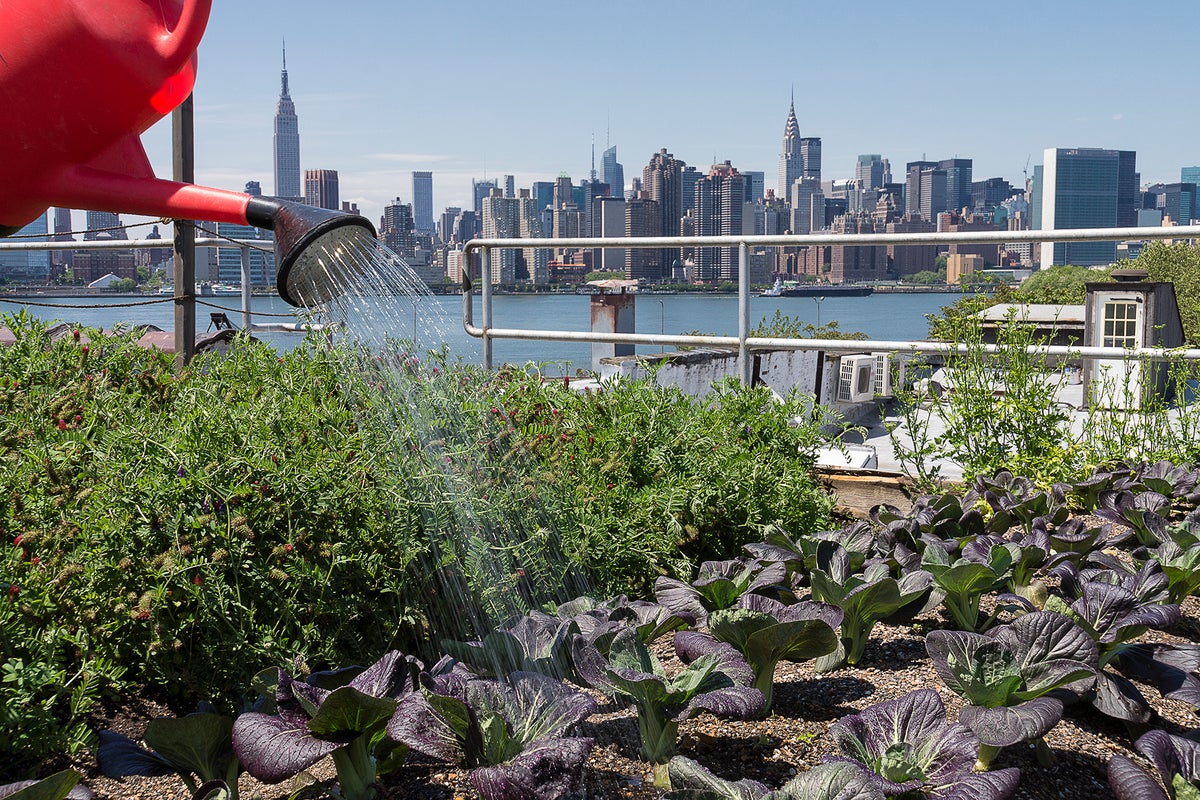The Of City Blooming
The Of City Blooming
Blog Article
Unknown Facts About City Blooming
Table of ContentsNot known Facts About City BloomingCity Blooming for DummiesThe Single Strategy To Use For City BloomingMore About City BloomingFascination About City Blooming
Interested in expanding food for sale in the City of Chicago? Below is a listing of frequently asked questions relating to the regulations and regulations that farmers should consider when intending an urban farming task.
The zoning change does not customize any various other codes taking care of composting, structure authorizations, purchasing or leasing City possessed home, business licenses or ecological contamination. There are existing codes that regulate these problems and they remain in complete effect and may apply to your project. Area yards are typically had or taken care of by public entities, public organizations or community-based organizations and kept by volunteers.
Urban ranches grow food that is planned to be offered, either on a not-for-profit or for-profit basis. As a result of their commercial purpose, metropolitan ranches need a company certificate. Yes. A community garden is enabled to offer excess produce that was expanded on site if the sales are accessory or subservient to the yard's key function described above.
Rumored Buzz on City Blooming
The amount of garden compost material can not exceed 25 cubic lawns at any kind of offered time according to the standards in 7-28-715 of the City's Municipal Code. Because the soil at most new yard websites requires amending, compost, dirt, timber chips, or other products can be obtained to create or boost the expanding room.

If a building license is required then the hoophouse will be taken into consideration an accessory structure. You can find out more regarding the structure permit requirements by getting in touch with the Division of Structures. The 25,000-square-foot size limit is intended to stop a single area garden from controling an offered block or interfering with the block's existing property or commercial personality.
The limit does not put on yards situated in Public Open Area (POS) districts. Can there be greater than one community yard that is 25,000 square feet on a solitary block? Yes. The dimension restriction uses to specific gardens, not to private blocks. No. Secure fencing is not needed, nevertheless, gardens that have huge parking locations may be required to install secure fencing or various other landscape design attributes.
Examine This Report on City Blooming
B1 & B2 districts call for that all commercial usage tasks be performed inside. R areas restrict commercial task. The regulations show the purpose and intent of the Zoning Code. Is fencing needed for urban farms? Yes. Fencings might be required, in addition to landscape design and testing, for sure parking lot and outdoor job or storage locations relying on location and the particular task occurring.
Urban farms need building authorizations and zoning approvals prior to construction (eco-friendly practices). Other types of city testimonial may be needed depending on details frameworks, activities, dimension, landscaping, licensing, public heath and stormwater administration concerns.
The Department of Service Affairs and Consumer Security can help figure out the details kind of service certificate that's required. Off road vehicle parking is required for many business projects in Chicago. The needed number of vehicle parking areas is based on the number of staff members working on website and not the square video footage of the growing area.
Little Known Facts About City Blooming.

A metropolitan farm can offer compost product generated on site, nonetheless, the procedure should abide with the laws in 7-28-715 of the Chicago Municipal Code. Aquaponic systems are permitted indoors on metropolitan ranches in numerous zoning districts.
Approximately five hives or swarms of honey bees might be kept as an accessory use. Beekeepers must sign up with the Illinois Division of Agriculture. For even more details regarding the proposed zoning amendment you may contact the Department of Housing and Economic Development, Bureau of Preparation and Zoning at 312.744.8563.
Farming in cities and city areas A metropolitan ranch in Chicago. Urban farming refers to numerous methods of cultivating. https://worldcosplay.net/member/1784867, processing, and distributing food in city locations. The term also relates to the area tasks of animal husbandry, tank farming, beekeeping, and gardening in an urban context. Urban farming is distinguished from peri-urban agriculture, which occurs in country locations at the edge of suburban areas.
Indicators on City Blooming You Should Know
, that seek to develop social networks established on a common ethos of nature and area holism. These networks can create by method of formal institutional support, coming to be incorporated right into regional town preparation as a "change community" activity for lasting city growth.
Some of the very first proof of metropolitan agriculture comes from Mesopotamia.
Report this page